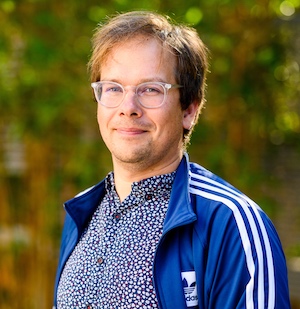
Email: kliment.verba / ucsf, edu
600 16th Street
Genentech Hall, Room S412E
San Francisco, CA 94158
Phone: 415 353-3822
Administrative AssistantBecca Quimbybecca.quimby / ucsf, edu
The focus of my lab is to understand the molecular mechanisms of information processing by kinase signaling networks. At all times cells have to register outside signals, integrate them with internal states and make life and death decisions. Protein kinases play key roles at all steps of this non von Neumann computation, from directly binding and responding to the extracellular signals to ultimate phosphorylation of transcription factors in the nucleus. Molecularly, this is carried out by rapid formation at the inner membrane leaflet and rearrangement of large protein complexes, the fundamental architecture of which is still lacking. This complex rearrangement is coupled to reformatting of the phosphorylation marks which in its turn leads to changes of kinase activity and downstream complex remodeling. Excitingly, catalytic domains of kinases are highly dynamic and have been caught populating conformations far away from canonical native states, providing a rich platform of coupling changes in conformations, protein complex components and phosphorylation states to catalytic output. This also raises some fundamental questions about potential benefits of being destabilized for signaling proteins with many inputs and outputs. Visualizing these complexes, at the membrane, as they navigate their complex conformational landscape while computing is the ultimate goal of the lab.
Although we utilize a variety of biophysical and structural methods, the most powerful technique in our repertoire is cryo-EM. However, even it is often limited in its ability to capture these complexes. Sample heterogeneity, transient nature of interactions and providing the appropriate membrane environment are all complicating factors. Therefore another long term interest in the lab is developing new technologies for cryo-EM data collection, sample preparation and processing to enable visualization of such biology.
Lastly, in the past couple of years the lab has developed an interest in a number of viral projects. Viruses, once they enter cells have to completely rewire the internal workings of the cell to their needs. This is done by engaging host proteins and changing their function. Interestingly, viruses are under extreme pressure to squeeze as many functions from their genome as possible, getting quite crafty. One biophysically cool way this is accomplished is by yet again, having non fully committed native states for some viral proteins allowing them to adopt dramatically different conformations depending on the binding partner, something we (as part of a larger QCRG effort) were able to show for SARS CoV2 Orf9b protein. Furthermore, as viruses with their limited genomes and limited proteins have to completely rewire the host cells, they can serve as excellent tour guides through the cell, uncovering fundamentally important axes of biology.